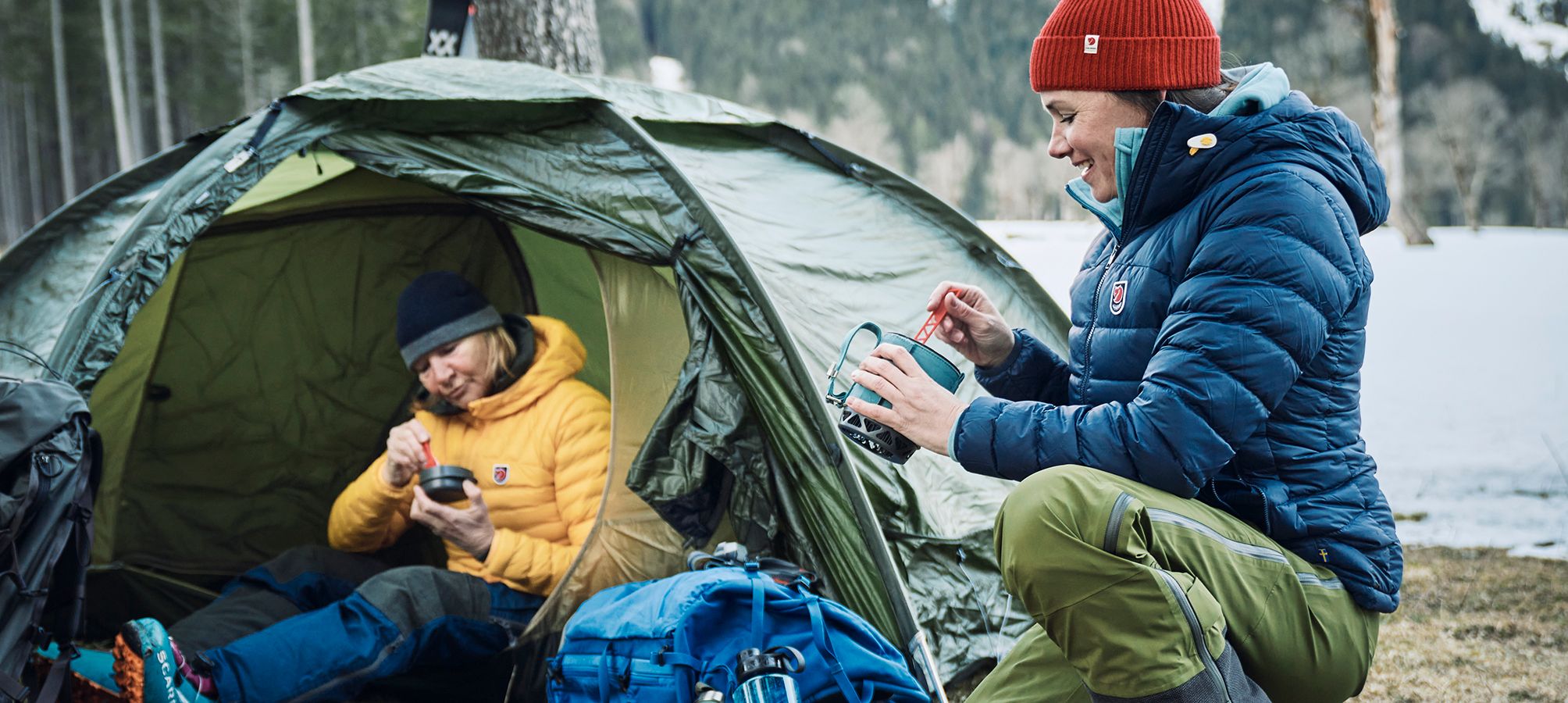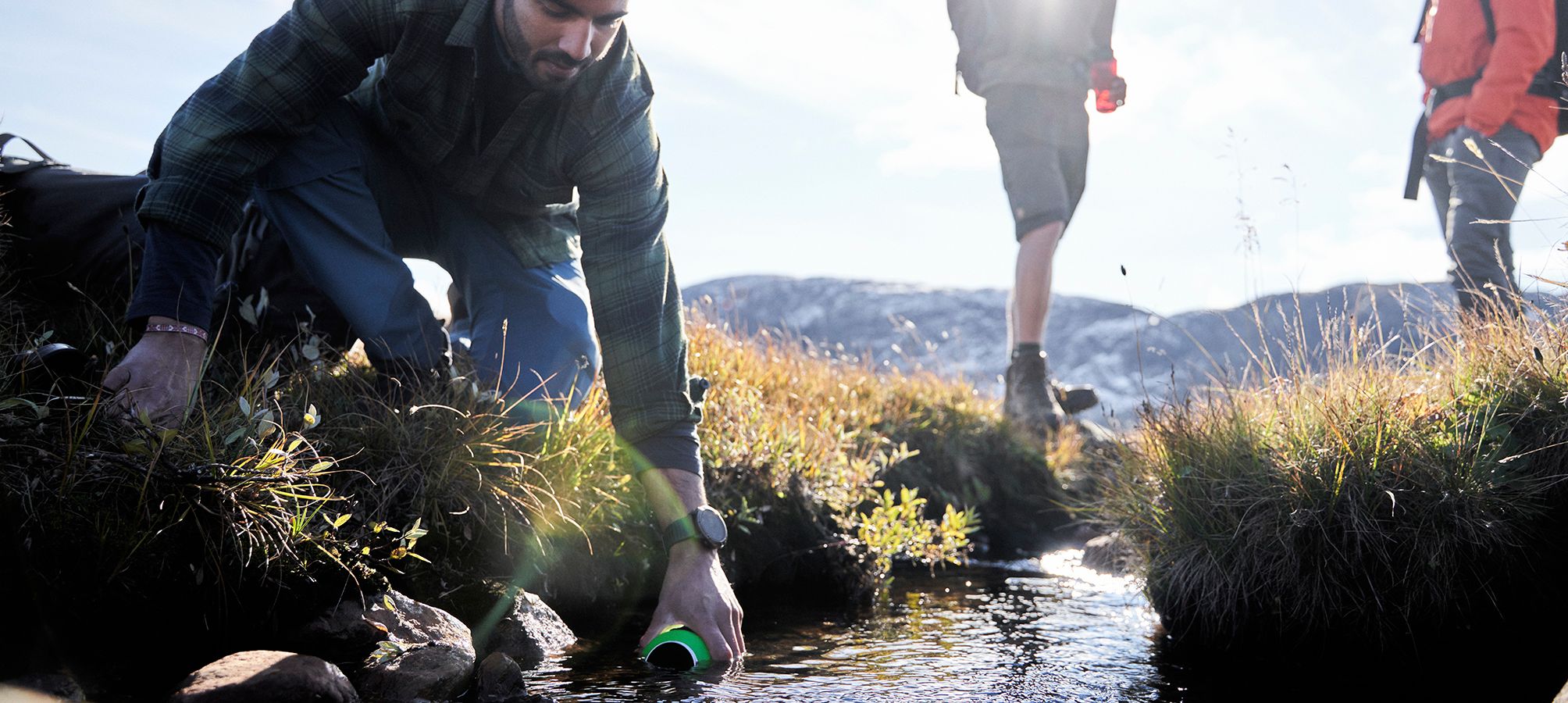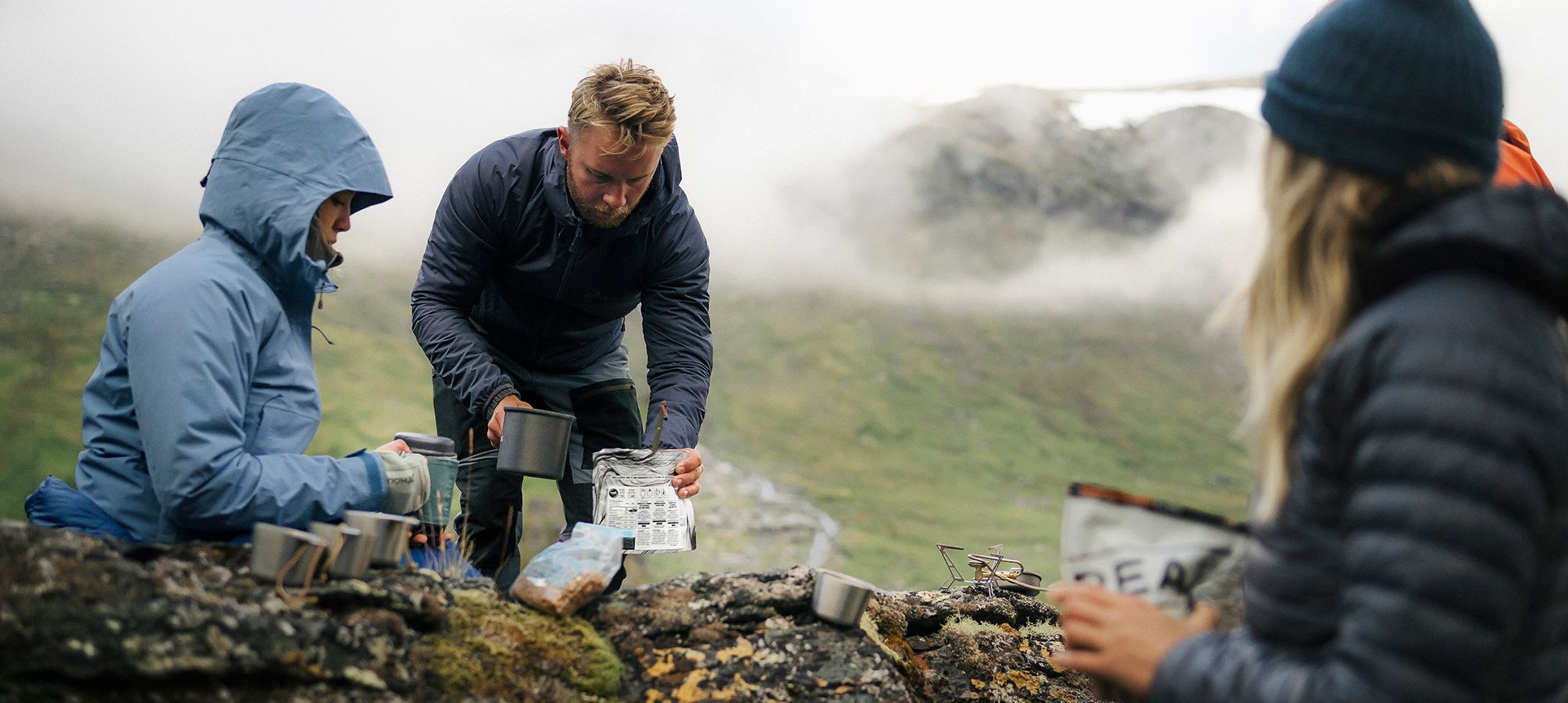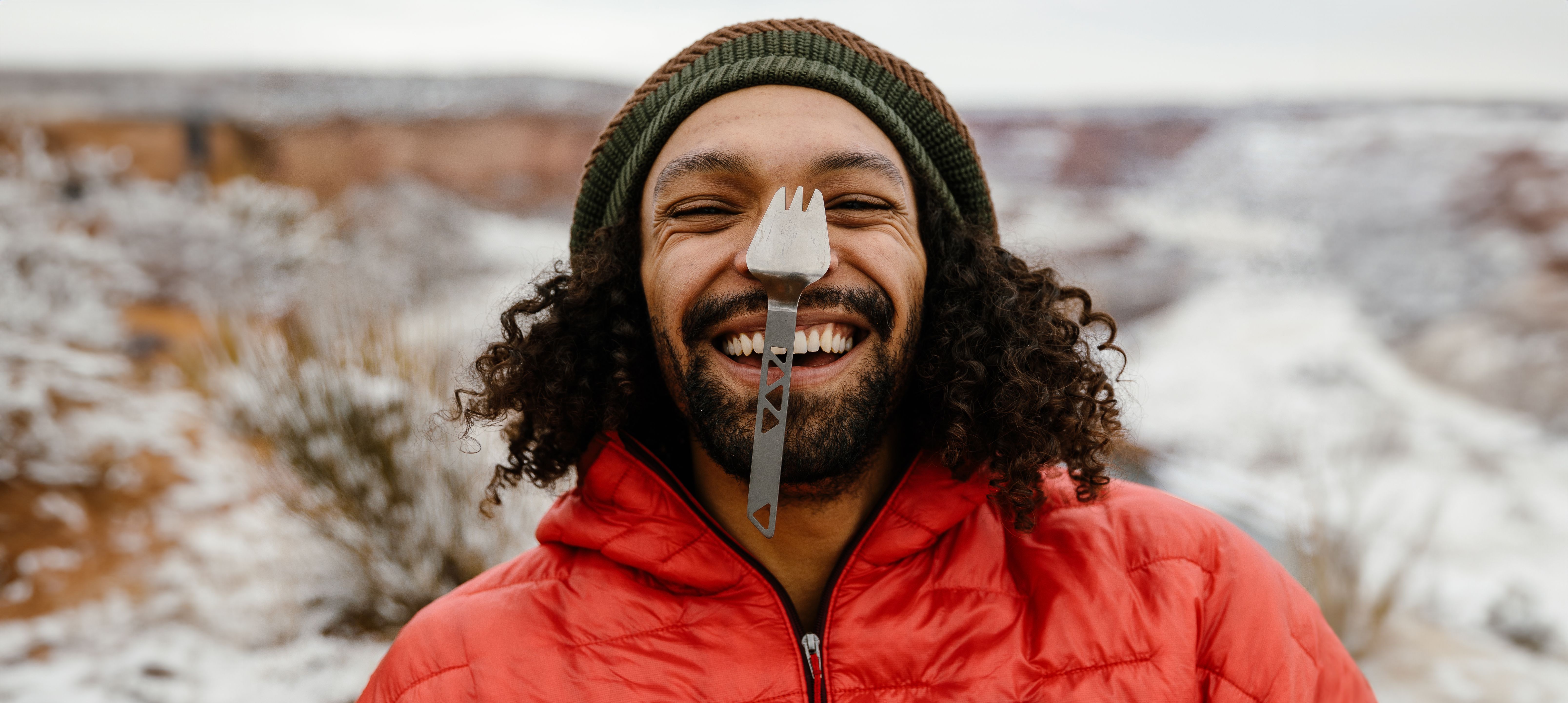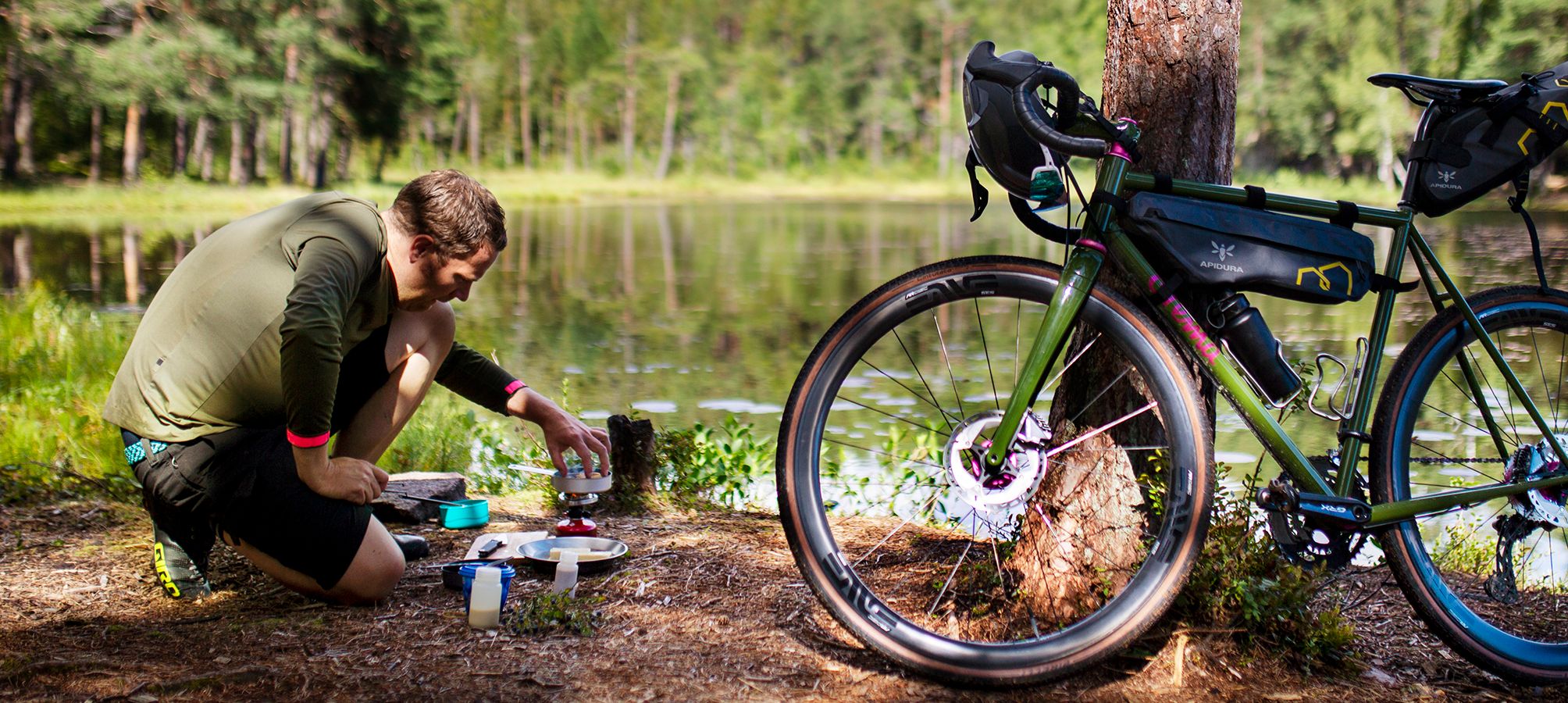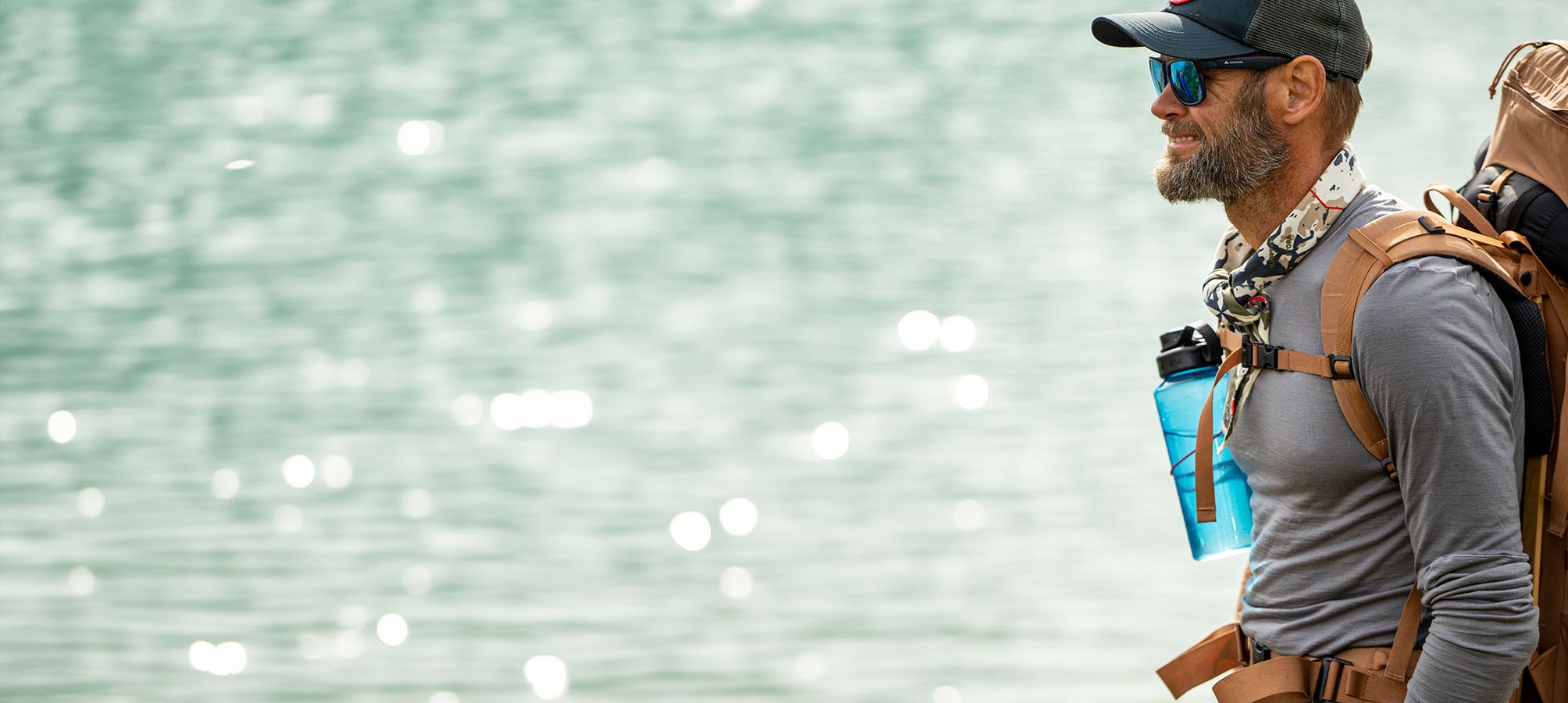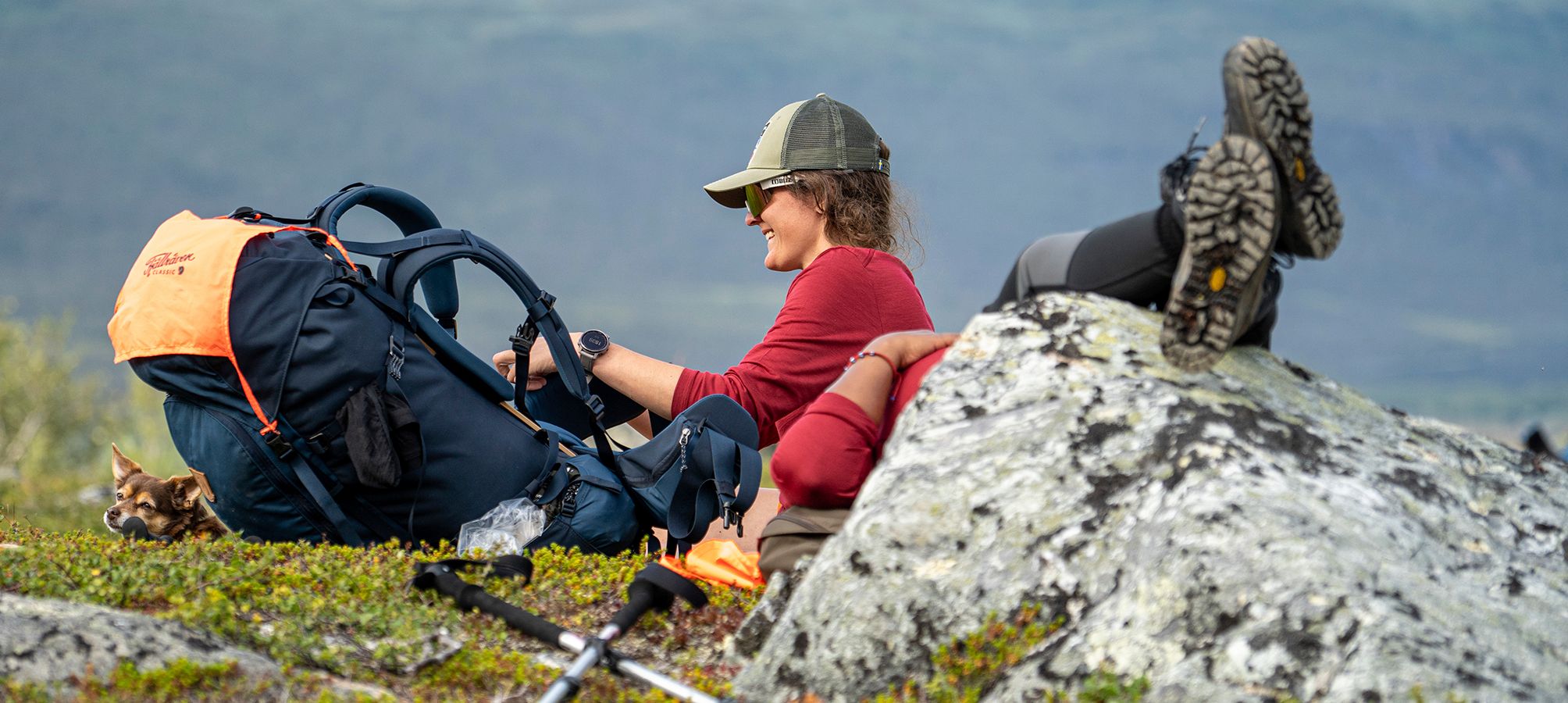Ultralight Trekking: 10 Tips to Save Weight on Tour
1. Eat from the pot
Every additional item in your backpack adds up. A plate might seem light, but combined with other seemingly lightweight items, it becomes quite heavy, especially when covering many kilometers over challenging terrain. An overly heavy backpack will eventually cause your back muscles and knees to groan over every extra gram. By eating directly from your cooking pot, you save weight. A nice side effect: You also reduce the washing up, saving both water and time.
2. Plan water consumption
Water is our next point. It can be among the heaviest items in your backpack. However, with proper planning, you can ensure you’re not carrying any excess. Research the rivers, lakes, or streams on your route and adjust the amount of water you carry accordingly. For example, if you’re hiking the Kungsleden in northern Sweden, plan your water stops based on the water sources you’ll cross.
3. Light outdoor food: Calories per gram
When it comes to food, weight-saving is possible, too. The golden metric here is calories per gram. Your food should supply sufficient energy without being heavy. Freeze-dried meals, nuts, and energy bars are excellent choices, offering high calories for their weight. If you’re cooking on the go, rice or pasta dishes are ideal. For inspiration, check out our outdoor cooking recipes.
4. Use multipurpose items
For each piece of gear, consider whether it can serve more than one function. A “Spork“, which combines a spoon and a fork, is a perfect example. It reduces the number of items in your backpack. Another example would be a multitool if you need tools on your trek.
5. Trimmed Toiletries
Even when it comes to hygiene, consider having a single product serve multiple purposes. Invest in a good biodegradable soap that can be used for both body and hair. The toothpaste tube can easily be replaced with toothpaste tablets that take up minimal space. Essentials like sunscreen, insect repellent, and medication can often be repackaged into smaller containers. Microfiber towels are lightweight and dry quickly. Pack your hygiene products in an ultralight packing pouch or toiletry bag.
6. Choose lightweight outdoor equipment
Technology, especially in the field of outdoor equipment, has made tremendous advances in recent years. Some modern tents and sleeping bags are incredibly light without compromising on comfort or warmth. It’s often worthwhile to invest in these newer, lighter models, especially when every gram counts on your next trek.
7. Minimize packaging weight
Store or "off-the-shelf" packaging often adds unnecessary weight. Whether it’s food, equipment, or medication, think about how you can reduce the packaging burden. Repackaging items is a good way to save weight.
8. Light outdoor clothing
Wearing multiple layers allows for flexible adaptation to varying weather conditions without the need for heavy clothing pieces. Instead of taking a thick jumper, three thinner, overall lighter layers might be more effective and versatile. Along with layering, choosing apparel that can be worn for longer periods, such as Merino wool products that resist odor, can help. This allows you to wear the same shirt for consecutive days, saving overall weight.
9. Limit electronics
Going on an adventure is the perfect way to disconnect from everyday life and digital noise. But if you still find electronic equipment necessary for your safety and wellbeing, every electronic device you take requires energy, and traditionally, batteries are heavy. Consider which devices are essential and whether there are options that combine multiple functions into one. Instead of a heavy power bank, a portable solar panel might be an alternative.
10. Focus on the essentials
This brings us to our final point. One of the most significant challenges when preparing for any trek is deciding what’s truly necessary. For every item you pack, ask yourself, “Do I really need this?” If your answer is “No” – leave it behind. After all, every trek boils down to the essentials – and that’s the best possible outdoor experience.
When you've done everything else to reduce the weight of your backpack and still need to shed an extra 2 grams: shorten the handle of your toothbrush.
-
Posted in
Food Hacks, Packing Tips, Trekking Tips





